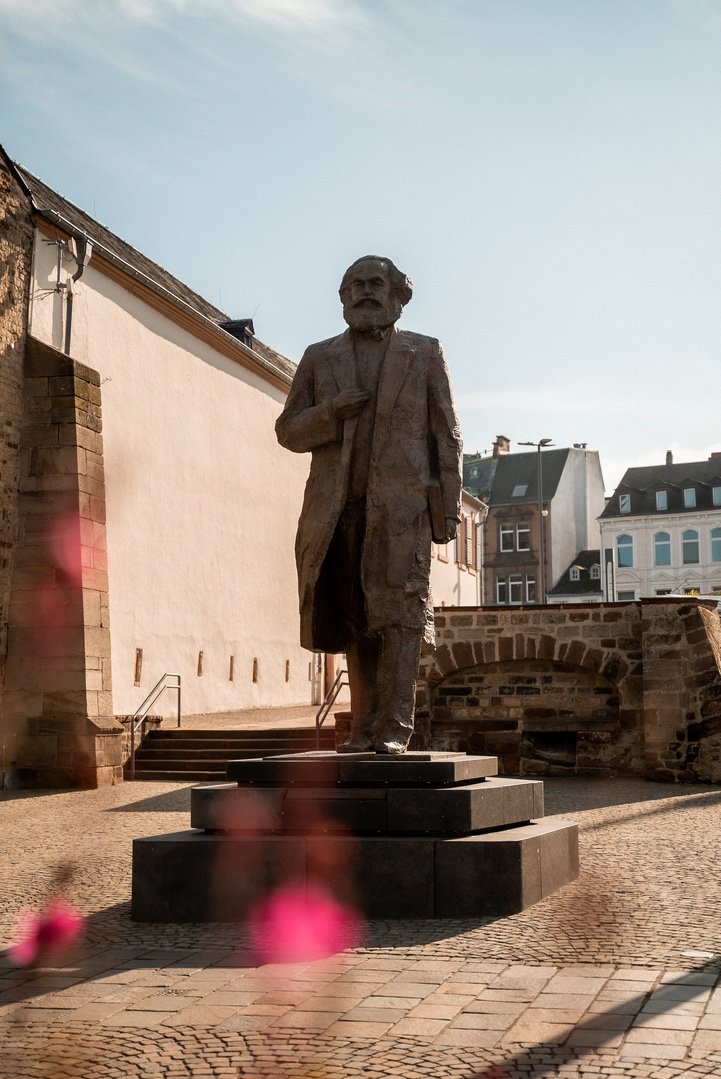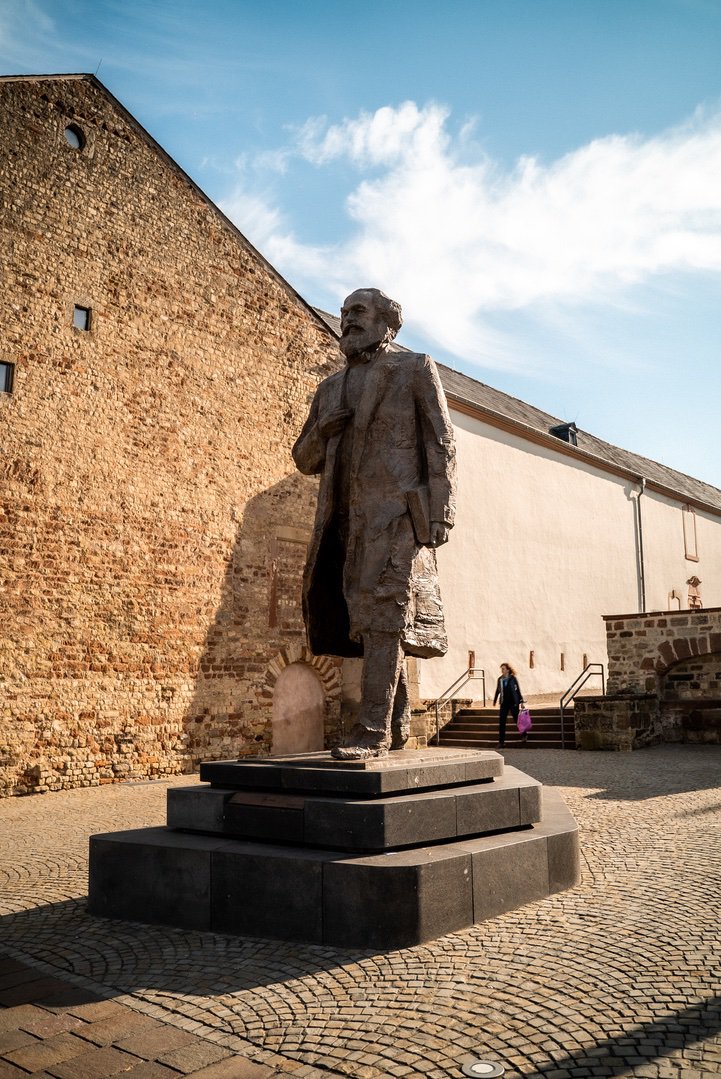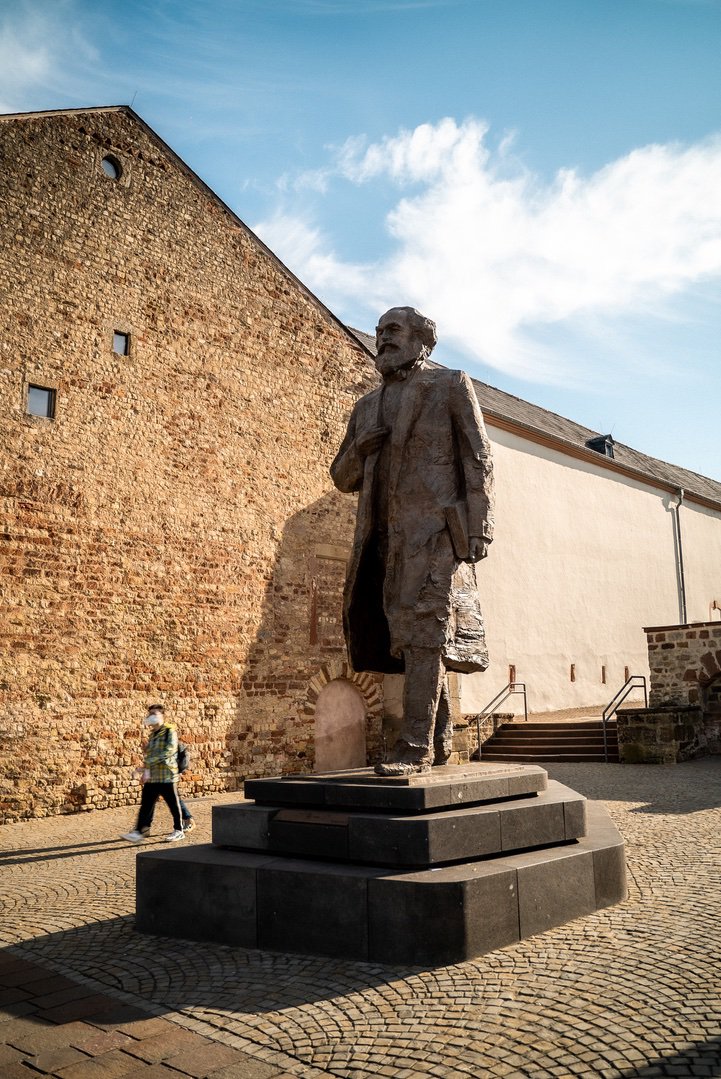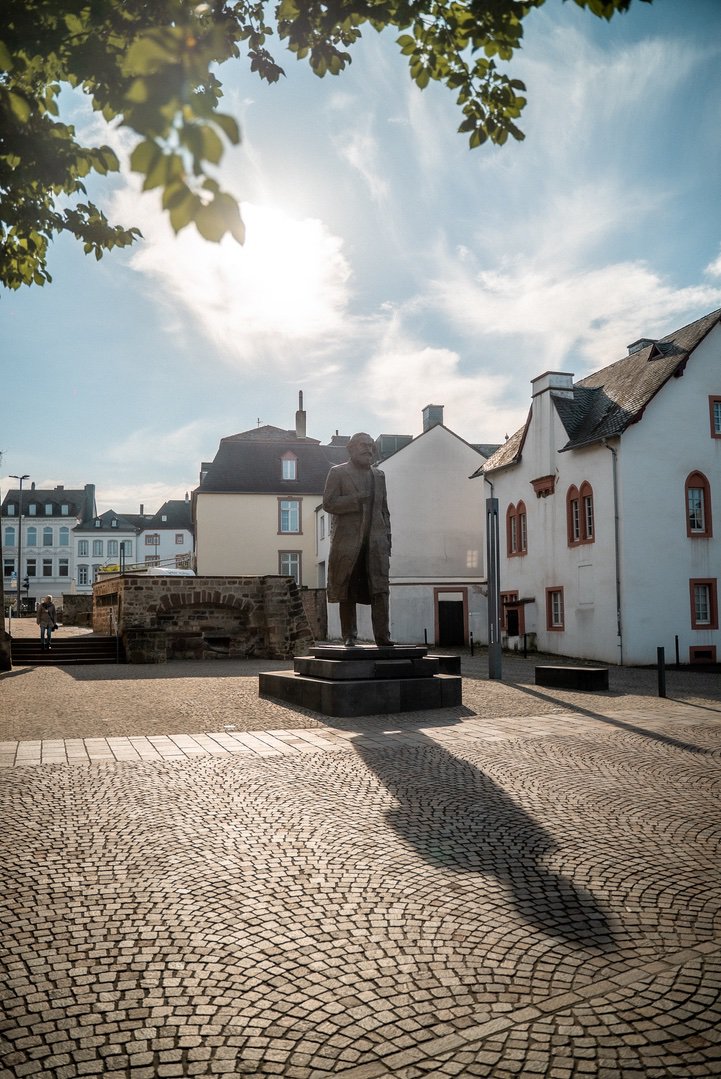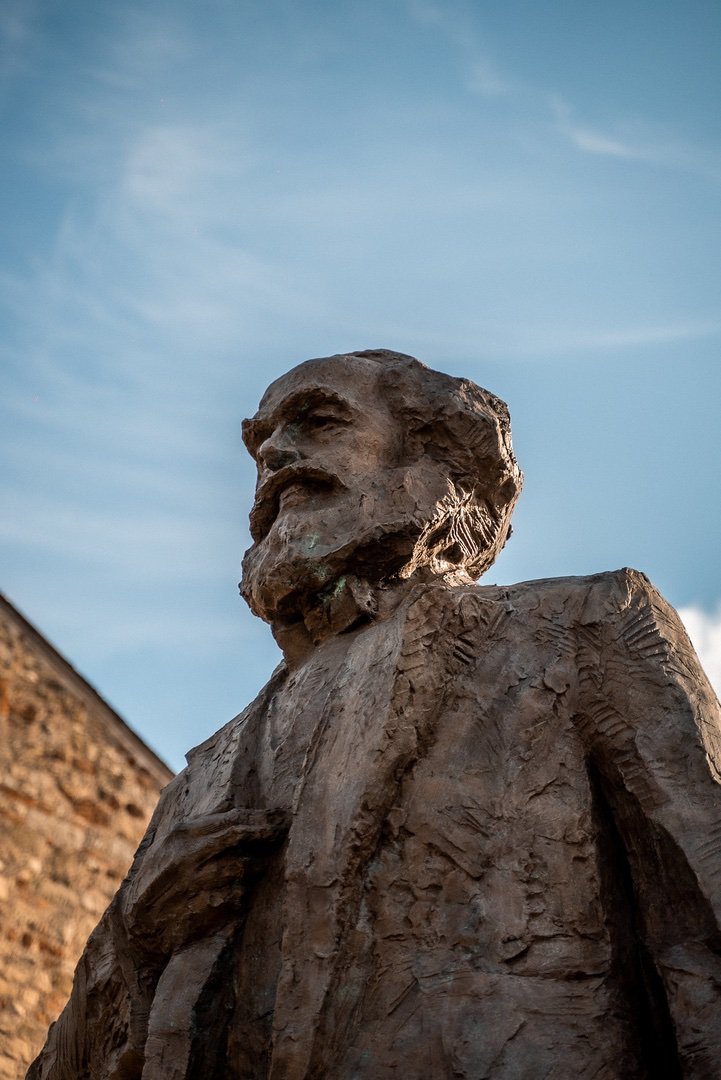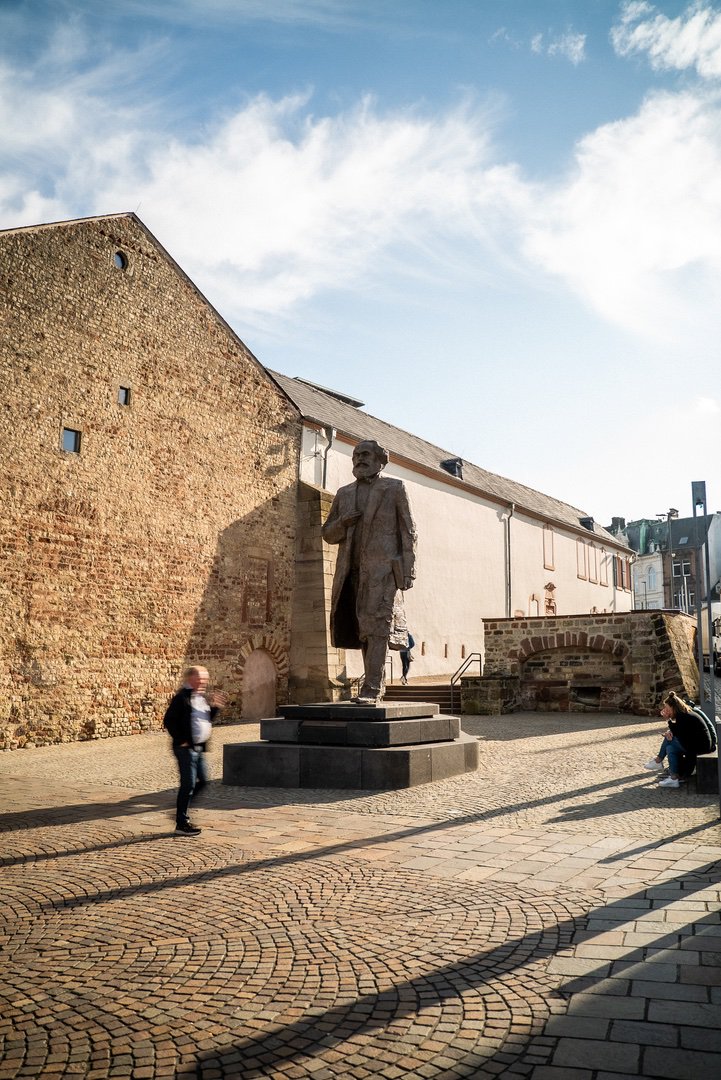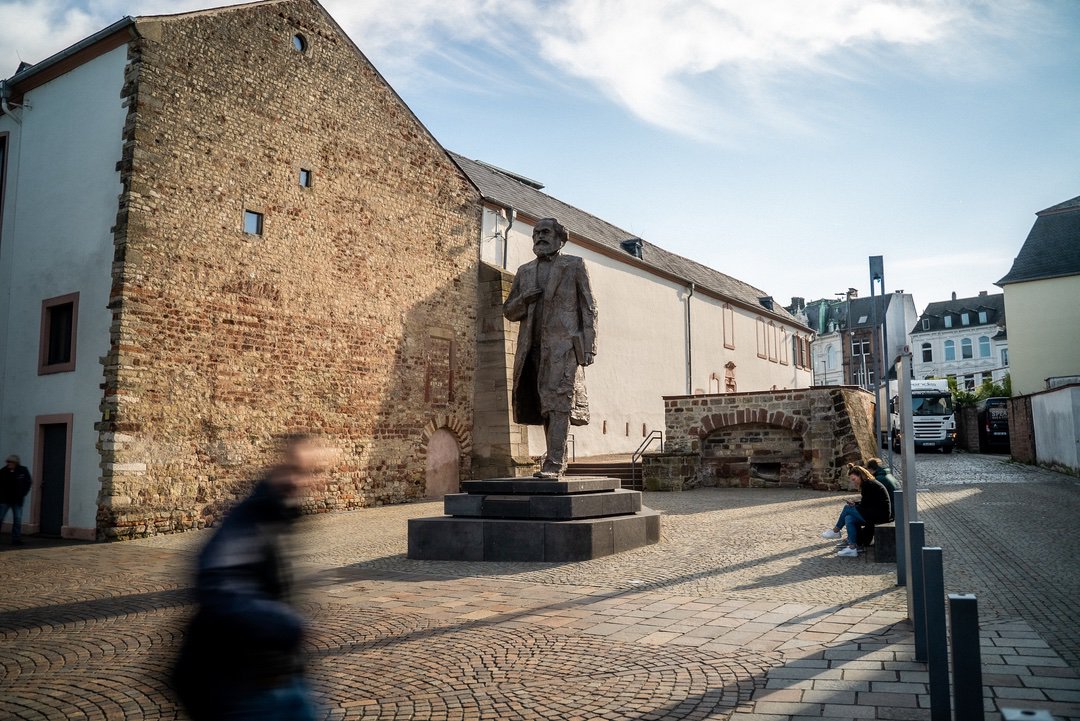Karl Marx statue
The Karl Marx statue is a gift from the People's Republic of China, it was erected on 05 May 2018 and is 5.50 m high. It shows a Karl Marx who is not yet of biblical age, but a somewhat younger scholar of Jewish origin holding a book, which indicates that Karl Marx was a scholar and was also revered as a scholar. This being a scholar also corresponded to his self-image. In his works, he also presented himself as a scholar and revolutionary. Two of these important writings, "Das Kapital, Band I" and the "Communist Manifesto", belong to the UNESCO World Documentary Heritage. They are as widespread as perhaps only the Bible, have been translated into almost every language in the world and have been quoted as frequently as they have been read or supposedly read.
The "Communist Manifesto" is still considered a birth certificate of the workers' movement. Many could relate to it because Karl Marx described in it something that did not yet exist, namely the proletariat. To this he ascribed an important role for the future. Moreover, the Manifesto is written in a stirring language that is reminiscent in many ways of biblical texts.
"Das Kapital" is an analysis of the capitalist mode of production, Karl Marx wanted to show the driving forces of capitalism in it. He himself only published the first volume, all the others were formed into one work after his death.
The political and economic conditions of his time developed so permanently and rapidly that he had to start again and again and never came to an end. Karl Marx as a scholar and seeker constantly doubted himself and revised his work. Nevertheless, today it is considered almost canon, untouchable, which in no way corresponded to Marx's intentions.
Author: Prof. Dr. Beatrix Bouvier
Editorial staff: Prof. Dr. Frank G. Hirschmann
